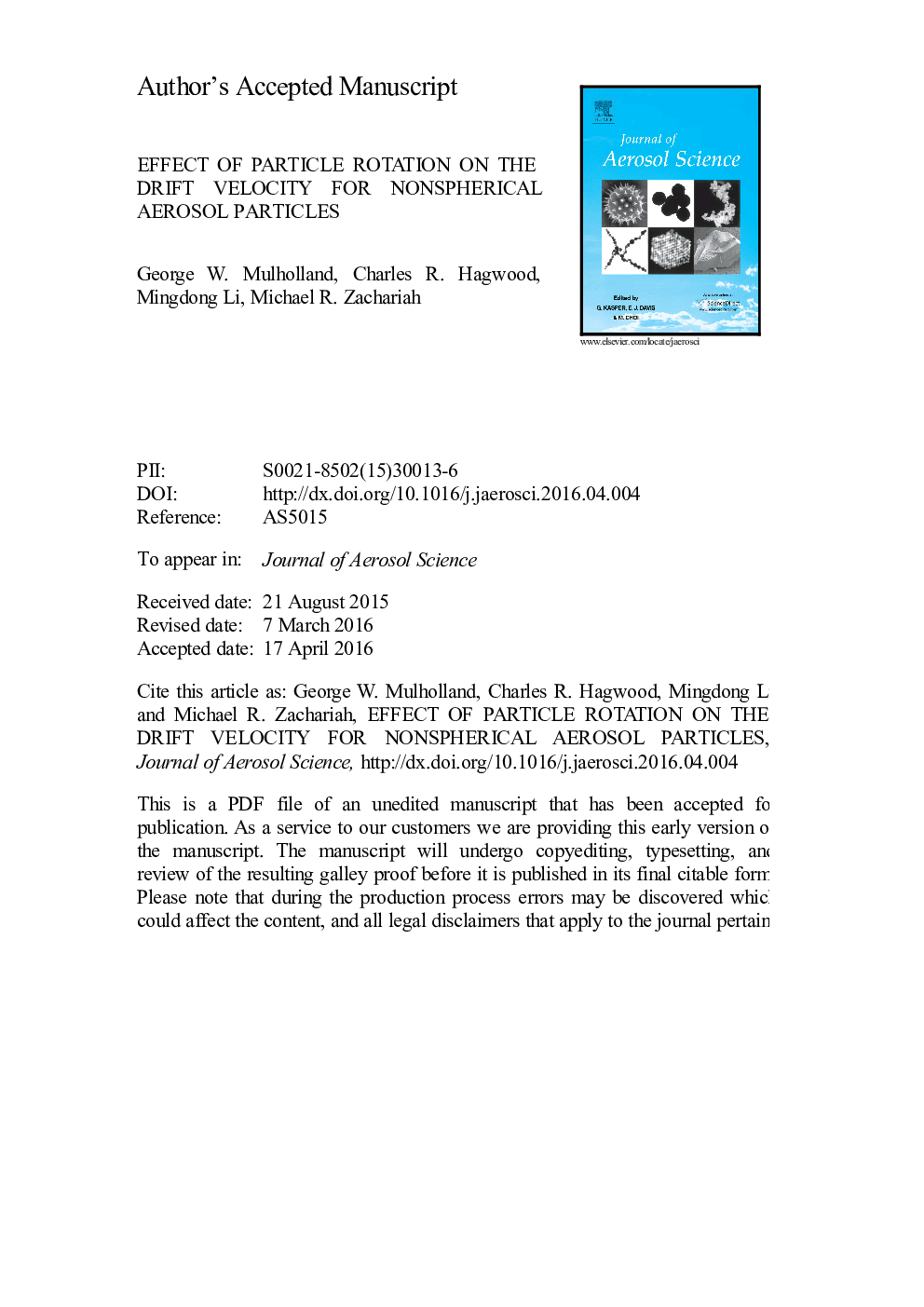| Article ID | Journal | Published Year | Pages | File Type |
|---|---|---|---|---|
| 6344286 | Journal of Aerosol Science | 2016 | 19 Pages |
Abstract
The theoretical drift velocity of a randomly oriented nonspherical aerosol particles in an external field has been previously computed both in the limit of slow rotation and in the limit of fast rotation but not in the intermediate interval. The low rotation limit has been widely used to calculate the drift velocity for a range of nonspherical particles. The fast rotation limit, which is equivalent to the projected area method, has been used for molecular ions and agglomerates. A 1-D model equation containing the particle acceleration and an orientation dependent friction coefficient is proposed to predict the drift velocity between the two limits. This model has the essential physical phenomena without the complications of the 3-D treatment of the combined translation and rotation behavior. As an example, the drift velocity is computed for model parameters based on the friction tensor and rotational diffusion coefficient for circular cross section nanorods in the free molecular limit. For a momentum accommodation coefficient of 0.9 and a particle density of 1000Â kg/m3, the largest percent deviation from the low rotation velocity limit is 14% and the deviation is at most 1% for nanorods of any length for diameters of 20Â nm diameter or larger. Much larger changes in the velocity ratio are shown to occur if the momentum accommodation coefficient is reduced. Also, examples are given where the dimensionless rotation rate increases by about a factor of 7 from either a change in density or a change in the mean free path of the background gas. The results of recent experiments and model calculation of the collision cross section and mobilities of large molecular ions are discussed in regard to our model predictions on the effect of rotation on the drift velocity.
Related Topics
Physical Sciences and Engineering
Earth and Planetary Sciences
Atmospheric Science
Authors
George W. Mulholland, Charles R. Hagwood, Mingdong Li, Michael R. Zachariah,
